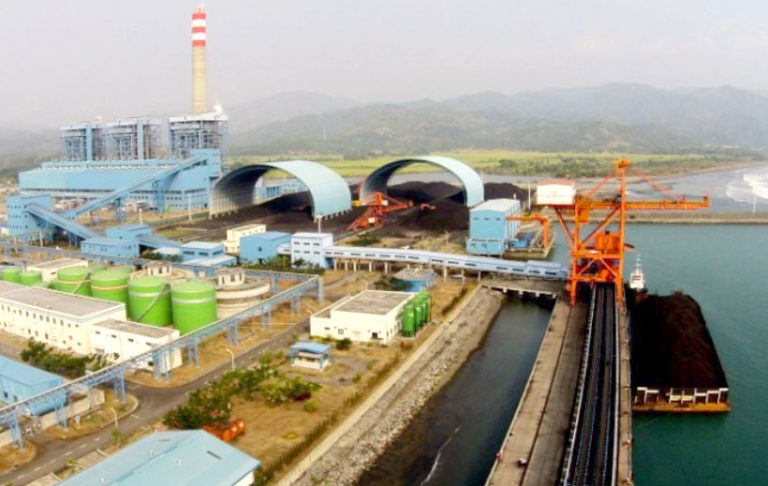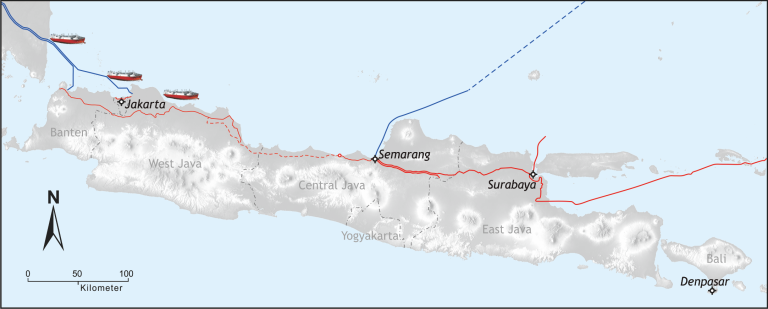As the world of energy is entering new page of a cleaner environment, its only natural that more and more people are getting concern in renewable energy and sustainability. Countries that are leading cleaner developments are already at the front-line paving the way for others to follow their steps through policies, technologies, and infrastructures. Indonesia, as a developing country is supposedly to follow this trend and setting its own pathway to realize cleaner development in Indonesia.
From the beginning, National Energy Council of The Republic of Indonesia (Dewan Energi Nasional / DEN) is the one formulating cross-sectoral energy management policies guided by National Energy Generation Plant (Rancangan Umum Energi Nasional / RUEN). In RUEN’s planning, there is a target on having 23% share of clean energy / renewables on primary energy mix and based on this target, PT.PLN (Perusahaan Listrik Negara) has its own planning to fulfill the cleaner energy generation pressure.
The first scenario is called ‘Optimistic Scenario’ where in this scenario PLN sticks with the least cost principal as long as the target is achieved. As it can be seen in the graph 1, the share of electricity generations from 2021 until 2023 are depicted, and coal still plays a bigger role here compare to other types of energy. What interesting is that after the target of RE share is achieved in 2025, the share of coal increases again in 2030 while maintaining the share of renewables at the same level. It seems that coal is an undeniable cheaper option of energy generation for PLN. While this may change in the near future, depending on the development of carbon tax, coal plants early retirements and other environmental pressure, at least this is the view of PLN these days.
 Graph 1. PLN Optimistic Scenario
Graph 1. PLN Optimistic Scenario
Now lets take a look at the second scenario, that is ‘Low Carbon Scenario’ where low carbon development is prioritized more than its energy generation cost. In contrary of the previous scenario, the RE share keeps increasing by year and even reach almost 25% of clean energy generation by 2030 while coal share keeps declining each year and reaches its bottom at 59,4% with no share rebound. In this scenario PLN focuses on biomass-coal co-firing development, where appointed plants in Java-Bali are have to fulfill at least 10% of biomass mixture and that of at least 20% in the rest of Indonesia. Start from 2025, all new coal power plant is designed to adopt minimal 30% mixture of biomass. This scenario also makes room for massive LNG adoption considering natural gas is the cleanest form of hydrocarbon and is necessary in the energy transition development. Other than that, development of Solar PV, Minihydro and Wind power plants will be used as renewable booster in the power generation.
 Graph 2. PLN Low Carbon Scenario
Graph 2. PLN Low Carbon Scenario
By understanding these two plannings alone, one can get idea that whatever planning PLN decides to go through in the future will impact future potential project developments. For example, while coal still plays a major role in both scenarios, the share is bigger in athe first scenario compare to the second scenario. Vice versa, the share of renewables is relatively bigger in the second scenario and this condition will satisfy renewable developers for sure. Regardless, one can be sure that bigger clean energy generation is expected in the future.
On a further note, among other programs PLN has several initiatives on realizing cleaner energy developments:
1. Coal Fired power plant to EBT-Base
EBT-Base power plant is a renewable power plants for base-load purpose and mostly located in the eastern Indonesia. EBT-Base plants are supposedly take over coal plants that are dominating base-load dispatch. These plants are planned to have 1 Gigawatt capacity by 2030 and will be supported by PLTMG / PLTG (gas-fired) to ensure its 24-hour operation stay consistent.
2. Diesel Power Plant to Solar PV
Currently PLN has a plan to convert 5200 units of diesel plants into solar PV, with initial phase of converting the first 200 units spread evenly across the country, equivalent to total of 225 Megawatt capacity
3. Co-firing Coal Fired Power Plant
As explained earlier, most of coal plants will be combined with biomass to reduce its emission in the future. The total capacity is expected to be 18,9 Gigawatt spread evenly throughout the country.
4. Floating Solar PV
PLN plans to have floating Solar PV in existing dams and lakes, even potentially complementing hydro plants in place. PLTS Cirata with capacity of 145 Megawatt (AC) is the pilot project of this program, and its success will lead the development of many floating solar pv ahead.
5. Solar PV on Ex-mining Field
Other than floating PV, PLN also plans to utilized unused ex-mining field with large area. Most of the planned locations are in Kalimantan with total capacity is expected at 435 Megawatt.
6. Natural Gas Power Plant to Biomass
At the very early stage, PLN also tries to convert gas engine plants into using biomass. Most of the planning are located in Maluku and North Maluku region.
All in all, clean energy is urgently needed and Indonesia is on the move to pursue this idea. PT. PLN as the one handling power generation in the country is on the front line to realize this target. And one can expect that the future of energy development in Indonesia will be much cleaner that it is today.
Sources:
– RUPTL 2021
– PetroRaya Consulting Market Report




